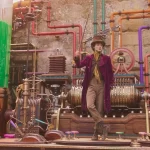SHOT! The Psycho-Spiritual Mantra of Rock: Mick Rockumentary, by Dayne Linford
If your documentary subject is the famous music photographer Mick Rock (yes, that’s his real name and yes, nobody can resist talking about it), creator of some of the most iconic pop culture images of the twentieth century, and you have to create a film, a series of images, to package and deliver his images, it must be intimidating. It also must be exciting, must be irresistible, and must be at least a little addictive. So, it must be rock n roll. Like Rock’s photography then, a documentary told from his perspective needs to be daring, inventive, needs to take honestly unnecessary risks in the pursuit of the perfect hook, the most innovative riff. And, in that pursuit, it sometimes will be self-indulgent, pointless, and myopic, like a rambling, eight-minute-long guitar solo. But we can’t blame it too much. After all, we got to be in the company of rock stars.
And that’s the crux of Shot! The Psycho-Spiritual Mantra of Rock, Barnaby Clay’s nearly autobiographical documentary. Rock himself is our only reference and guide to his life story and his thousands of photographs, a constant touch point and narrator, and his personality drives the film forward. Beyond Mick himself, the film does rely on one framing device, kept constantly in the mind either through dialogue or literally, actually sitting in the background as he talks – Rock’s drug overdose and near death experience in the mid-90s.
Beyond just framing, Clay tries to use this moment as a thematic touchstone and narrative climax, constantly reminding the viewer of Mick’s impending rendezvous with fate. Rock also constantly mentions this moment, and you can’t blame someone for reflecting on the moment they nearly died, but it does leave you wishing one reference or the other would go for the sake of brevity. Personally, I’d rather watch Rock talk about nearly anything than the unfortunate clumsy experimentation with the moment. Especially in a film teeming with imagery, the attempt to make even more striking imagery simply jars and reminds you that you’re no longer looking at stellar photos of cool rock stars doing provocative things. Instead, the documentary attempts to emulate music video aesthetics, such as when a phalanx of nurses storms Mick’s existentially large, comically dark hospital void, all wearing sharp red heels and walking with a perfect sashay as they hop to in the attempt to save his life or affirm his worth or just add a little eye candy. Or are they…rock angels? Regardless of which point or development I missed, it was unnecessary and uninteresting, especially when it reaches its visual climax and we’re subjected to druggie 2001.
Which makes me all the more glad those moments are relatively brief across the film’s running time, leaving plenty of space for what’s important – watching Mick sort through boxes of photos and reminisce about the friends and associates he counted amongst the greatest rock musicians of his time, including figures like Lou Reed and David Bowie. Their stories alone are with the time, and the images they created with Mick are simply stunning. Though this is where the film experiments the least, where it’s the least rock n roll, it’s also the most human, and the most satisfying. Rock has quite the life story, and an assortment of incredible tales to keep your interest. Beyond that, the figure himself carries a good deal of interest – his post-survival, ex-junkie remove as he speculates on why he can’t get rid of any of his old photos, the exhaustion and the dedication with which he now approaches photography.
Watching him at these moments, I’m struck by a desire to simply drift in this current, instead of going back to narration and canned historical footage. Particularly, the film put me in the strange position of resenting Mick for his overdose. For a rock n roll film, it seems awfully obvious to have everything point to the inevitable fall. Maybe it’s callous to think of clichés when watching someone talk about their actual, lived experience but it all felt so, well, clichéd to look forward ominously to his hospitalization throughout the film. On the other hand, a cliché exists in the telling, not in the event itself, and this rendition leans heavily.
But oh well, the little interruptions are over soon enough and it’s a pleasure to watch Mick looming over his old photos, critiquing, reminiscing. It’s one of the rare pleasures that a documentary can give you, the chance to spend hours sharing a remarkable or notorious person’s confidences and intimacies. It’s not as showy as the rest, simply watching someone decide what to say, but it’s the best and oldest secret a camera can offer, and it’s good enough for me. Luckily, it’s usually good enough for Clay, too.



























